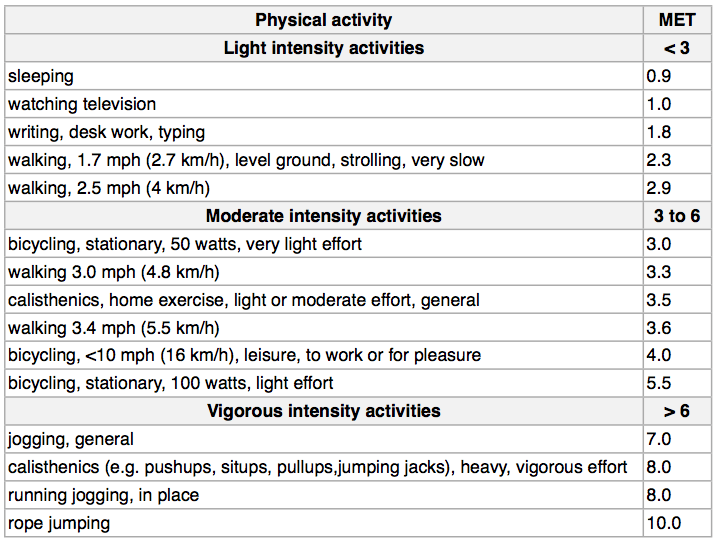Active living is an approach to life that values and includes physical activity in everyday living. You can find ways to be active at work, at home, and during leisure time. Being active includes different types of activities:
- Aerobic exercise. Learn what aerobic exercise is and how to get started »
- Resistance training. Learn what resistance training is and how to get started
- Recreational activities, such as playing tennis, skiing, or swimming. Learn how to practice your favorite activities safely
Trying to sit less and move more, such as:
- Taking the stairs instead of the elevator
- Parking farther away from the door to a shopping centre walking to the store instead of driving
Find more tips to help you sit less and move more throughout the day
An action plan can help you get more active.
- Learn how being active affects your heart
- Learn how to build an action plan
Your safety is important. Learn how to modify your activities in hot and cold weather, and when you should skip your exercise session.
- Learn how to exercise in extreme weather conditions
- Learn when you should skip exercise
Sit Less, Move More
Being more active is a frame of mind. We are so accustomed to sitting during the day that it takes effort to move more.
The first step to sitting less and moving more is to become aware of how much sitting you are doing.
Do you sit while doing the following activities?
- watching television
- talking on the telephone working
- commuting to and from work
- When given the option between either walking or taking an elevator up one flight or down two flights of stairs, which do you choose most often?
- Do you try to find the closest parking spot at the shopping centre?
If you answered yes to any of the above, you are not alone. With modernization and all of the conveniences that come with it, our lives have become more sedentary. Unfortunately, this comes at a cost to our health because we are sitting more than ever.
How Do I Sit Less and Move More?
Reflect on the activities you do sitting. Is there a way you could do them without sitting?
- Can you get up and stretch and go for a short (2 minute) walk every hour that you sit either at work or watching television?
- If you have a long phone call ahead of you, would you consider getting up and moving around while talking for some or all of the conversation?
- Instead of finding the closest parking spot, would you consider parking or getting off public transit a short distance away from where you are going?
- Can you walk or bike part of your commute to work?
The final step to sitting less and moving more is to make an action plan.
- Pick one thing you could do to sit less and move more
- Start small and build your way to a more active life.
Some people find that wearing a device that can track steps is very helpful to see how much they are moving during the day and/or to monitor their activities. Physical activity guidelines for adults recommend achieving 10,000 steps per day. You can start by monitoring your natural number of steps per day and then set a goal to increase it weekly until the goal of 10,000 steps per day is reached.
Find out more about how wearable devices can help you stay active
Find out how to build an action plan »
Recreational Activities
Practicing the activities you enjoy is an easier way to stay motivated and to embrace a more active lifestyle.
The information on this page is not intended to replace a consultation with your doctor. The aim is to provide you with evidence on some of the many benefits of regular exercise are:
- a lower heart rate (HR) at rest and in response to exercise
- a lower blood pressure (BP) at rest and in response to exercise
- maintaining a good muscle mass and healthy weight
- reduce your risk of chronic disease like diabetes type 2, high cholesterol, and certain type of cancer
- Improve your sense of well-being
- Improve the quality of your sleep
This means that your heart will not have to work as hard while doing your favorite activity (heart work = HR x systolic BP).
Effort Required for Recreational Activities
With regular exercise you can maintain or increase your exercise capacity or we can say exercise tolerance. There are two objective ways to try to quantify your maximal exercise capacity/tolerance at a certain moment: the maximal oxygen uptake or peak VO2 during exercise and METs.
The oxygen uptake is measured with a cardiopulmonary stress test. Learn more about the exercise stress test (cardiopulmonary assessment)
Another way of expressing the maximum amount of work your body can do is looking at the metabolic equivalent of task (MET). A MET is a measure of the energy cost of a specific physical activity. The maximum amount of work that you are able to do on a stress test can be expressed also as MET level.
These two measurements are dynamic, meaning that can increase after being more active or decrease if you stay sedentary or for medical reasons.
A MET level for an activity can tell you how intense the activity is (how much effort is required to do it).
For example, going for a slow walk has an energy cost of 2 to 3 METs while hiking has a cost of 6 METs. Thus, hiking has a higher energy cost and is more intense than slow walking.
Knowing your maximum oxygen uptake number or the MET level from your stress test (cardiopulmonary assessment) is important.
- Ask your cardiovascular prevention and rehabilitation team or your doctor for this number.
- Most recreational activities have a MET level. Compare your MET level (from your stress test) to the MET level for the activity that you want to do. This will help you to understand if you are ready to do the activity or if you need to modify it to start at a lower intensity level.
Metabolic Equivalent of Task (MET) levels for common activities
The MET levels needed for some common activities are:

Tips to Be Successful
Make sure you warm up before the activity and cool down after.
- Learn how to warm up before an activity
- Learn how to cool down after an activity
Use the Borg Rating of Perceived Exertion Scale to understand your effort level. Ask your doctor up to what level of exertion is reasonable for you to exercise
- See the Borg Rating of Perceived Exertion Scale (PDF, opens in new window)
Taking your pulse can help you better quantify the level of effort and serve as an indicator for progressing on your exercise plan if you don’t reach the heart rate objective previously agreed with your rehabilitation team. Also, there are some wearable devices that can help you monitor your heart rate during exercise.
Find out more about how wearable devices can help you stay active.
